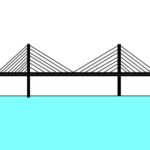Leland Teschler, Executive Editor
[email protected]
On Twitter @ DW_LeeTeschler
YOU MIGHT THINK the way to make better engineers is to improve engineering education. Although there may be something to that idea, it is becoming apparent that factors outside the formal learning process may outweigh anything done on a campus.
For example, it increasingly looks as though the engineering mindset is a function of preschool  experiences. Consider this fun fact: For every 15 minutes of play, kids tend to use a third of that time learning about mathematical, spatial, and architectural principles. Thus the new wave of thinking is that the best engineers are those who were allowed to play unsupervised much of the time.
experiences. Consider this fun fact: For every 15 minutes of play, kids tend to use a third of that time learning about mathematical, spatial, and architectural principles. Thus the new wave of thinking is that the best engineers are those who were allowed to play unsupervised much of the time.
Studies by M.I.T. professor Laura Schulz reinforce this idea. She ran tests on four-year-olds wherein one group was formally instructed in how a squeaky toy worked, while the other was shown the feature “accidentally.” When both groups of kids were left alone to play with the toy, the group that “discovered” the squeaky feature played with the toy longer. That group of kids also uncovered hidden features at which the instructor hadn’t hinted.
The takeaway from this exercise was that the four-year-olds taught how the toy worked never uncovered everything it could do. Their curiosity had been deadened.
And kids who aren’t terribly curious don’t grow up to be great engineers. At least that is the thinking among an increasing number of people responsible for hiring engineers. At NASA’s Jet Propulsion Lab, for example, candidates for engineering jobs now get asked about their hobbies and how much they played in their childhood, regardless of their academic record. This line of questioning has its origins in a realization that younger JPL engineers were not as comfortable using their hands as their older colleagues, or as good as solving mechanical problems and puzzles.
But even if you hire a bunch of creative technical personnel, they won’t be much good if they all have the same background. That’s the conclusion of researcher Kevin Dunbar who followed four molecular biology labs and recorded the human dynamics he noticed. His key finding concerns solving problems: When all members of the lab had roughly the same knowledge, they tended to lapse into groupthink. Researchers were better able to attack problems from a different angle when they had diverse but overlapping backgrounds.
“When someone thinks they understand something, the mind edits reality so efficiently that errors can be hard to perceive. But when someone observes a scenario they are unfamiliar with, a part of the brain operates inefficiently, giving us time to see outliers and consider their significance,” summarizes Harvard University assistant professor Sarah Lewis in The Rise: Creativity, the Gift of Failure, and the Search for Mastery.
And though it’s clear that good engineers are persistent in the face of difficulties, even the best engineers are likely to go off course if they’re stubborn about the wrong things. Here’s how Angela Duckworth, author of Grit: The Power of Passion and Perseverance, puts it: “You have to figure out when to give effort and when to withdraw it. High-functioning people are able to do both and somehow have an eye for asking whether they are in the game too long. The higher level the goal, the more you should be tenacious. The more concrete or particular it is, the more you should be willing to give it up.”
None of this stuff, of course, is taught in school. It probably helps explain why some of the best engineers have never seen the inside of an engineering classroom.
You may also like:
Filed Under: Commentaries • insights • Technical thinking, Trends








